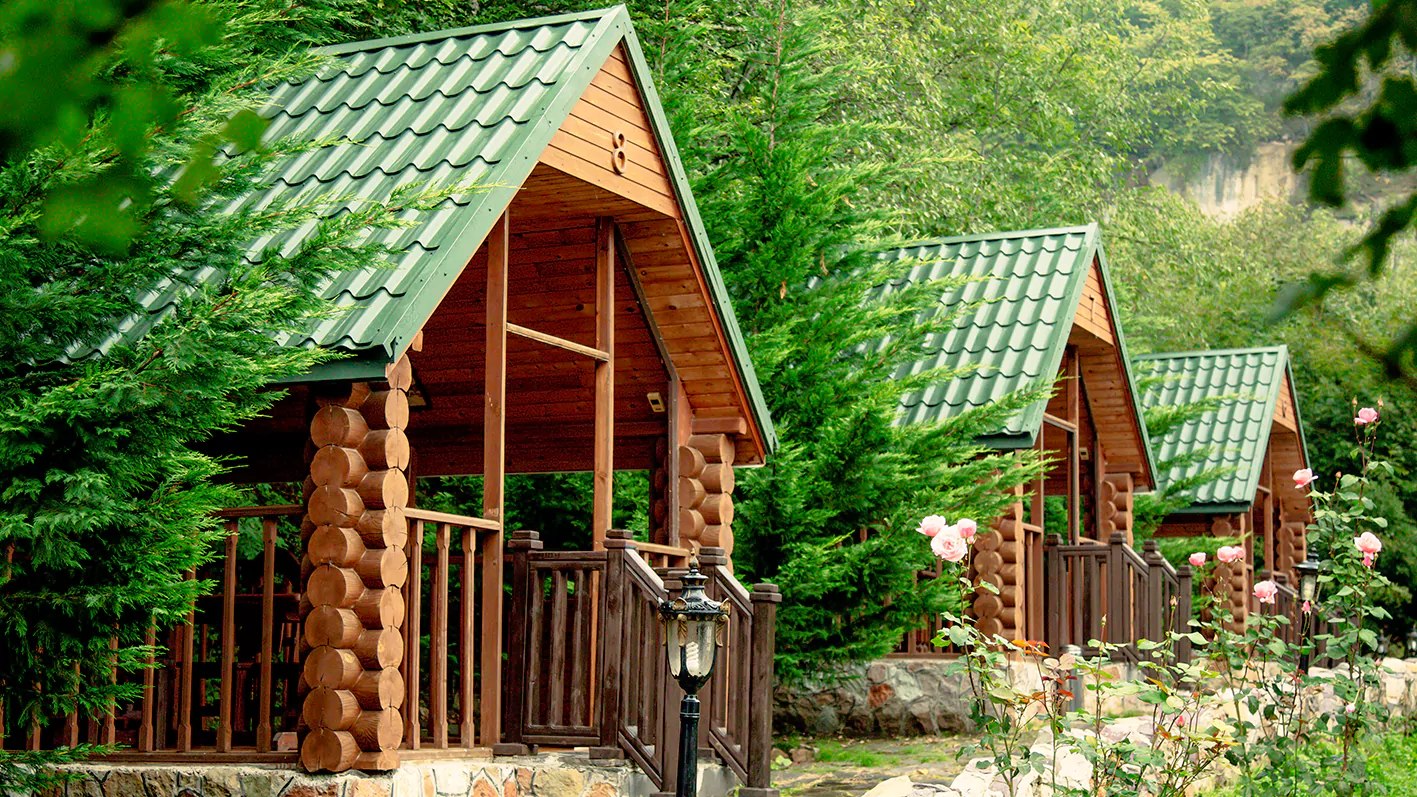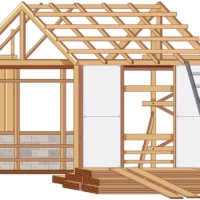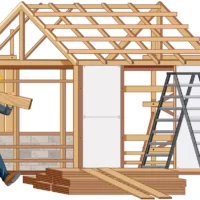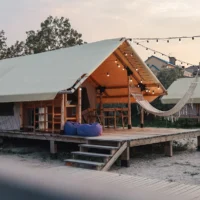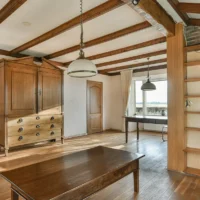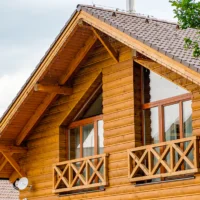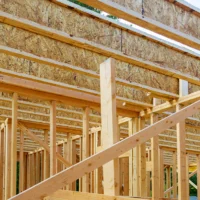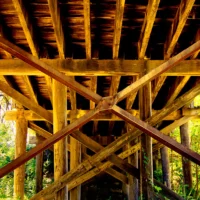Table of Contents
Introduction to Log Wood Siding
Log wood siding offers the natural beauty of a traditional log cabin without the complexity and cost of full-log construction. Whether you’re building a cabin in the woods or adding rustic charm to a modern home, log wood siding provides warmth, character, and timeless appeal.
Today, homeowners are turning to log siding to blend classic aesthetics with modern convenience. With options like pine, cedar, hand-hewn finishes, and customizable profiles, it’s easier than ever to give your home the charm of a cozy lodge without sacrificing functionality.
What Is Log Wood Siding?
Log wood siding is a type of exterior wood cladding that mimics the look of traditional log cabins. Unlike full-log construction, this siding is attached to conventional home framing, offering the same rustic appearance at a fraction of the cost.
It’s available in various wood species, styles, and thicknesses, with popular profiles including half-log, quarter-log, and flat log siding. The result? A beautiful, durable, and energy-efficient exterior that adds value and charm.
Why It's a Popular Choice for Rustic and Modern Homes
From mountain retreats to suburban homes, log siding offers unmatched visual appeal. It works well with many architectural styles, blending seamlessly with stone, metal roofs, and large windows. Whether you’re going for a traditional cabin or a modern rustic design, log wood siding delivers both style and performance.
Who Should Consider Using Log Siding?
- Cabin Builders who want an authentic look without full-log maintenance
- Homeowners seeking to improve curb appeal with natural textures
- DIY Enthusiasts looking for a manageable, install-friendly project
- Designers and Architects working on rustic or mountain-style builds
Benefits of Log Wood Siding
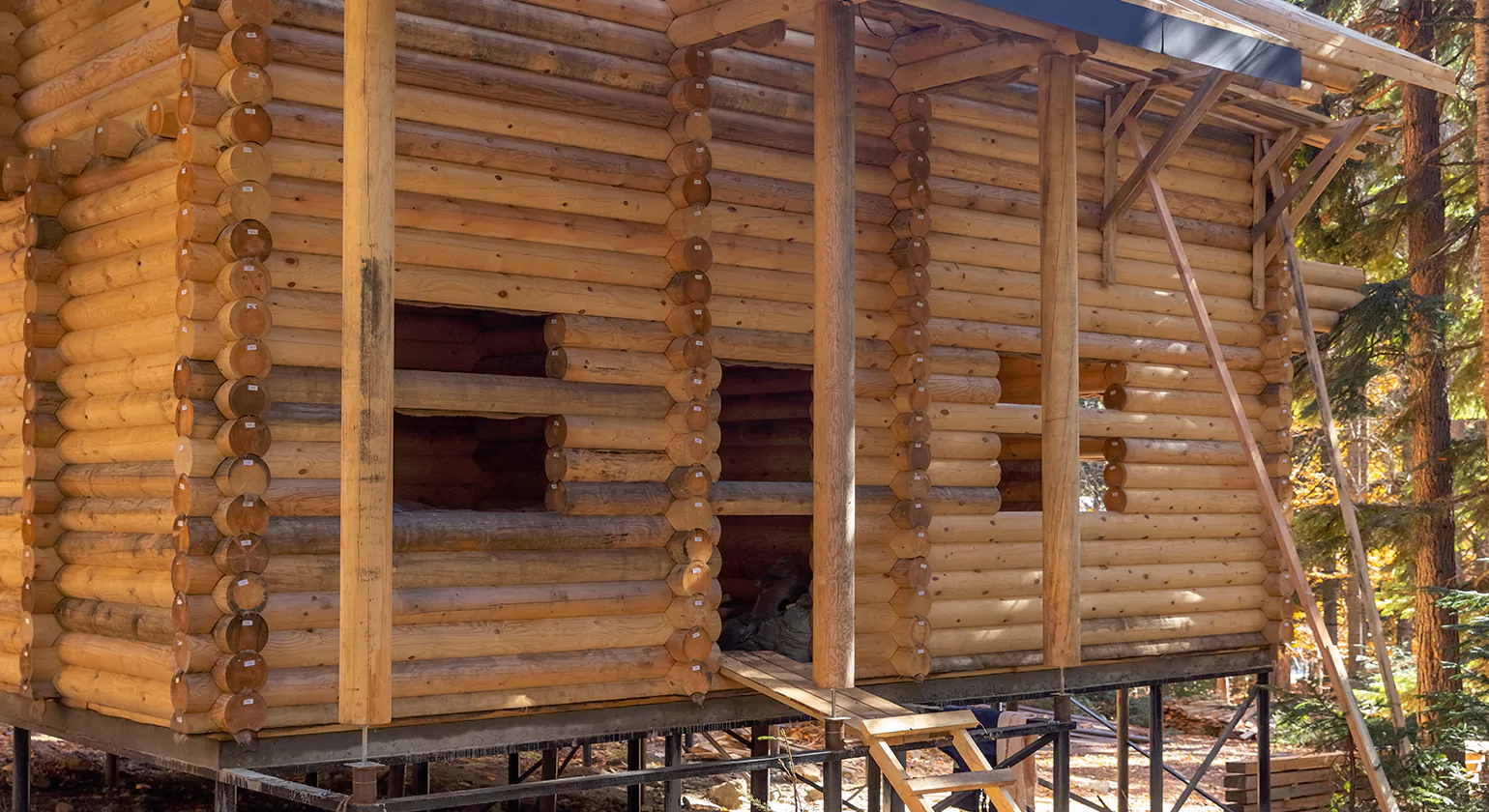
Aesthetic Appeal of Natural Wood
Nothing matches the character and charm of real wood. With visible grain, knots, and rich tones, log wood siding enhances any home’s personality. You can choose from smooth or hand-hewn textures and apply custom stains to match your vision—whether that’s rustic pine or golden cedar.
Cost Savings Compared to Full-Log Construction
One of the biggest advantages of log siding is cost. Full-log homes require specialized crews, cranes, and heavy materials, which can double your budget. Log siding, on the other hand, attaches to standard framing—reducing labor, material, and construction time dramatically.
Additionally, the tongue-and-groove or end-matched systems allow for faster installation and less material waste, helping save on both materials and labor.
Energy Efficiency and Insulation Value
Log wood siding adds a layer of insulation to your home, especially when paired with proper sheathing and moisture barriers. Cedar and pine are both naturally insulating woods, which helps regulate indoor temperature, reducing heating and cooling costs year-round.
Plus, with kiln-dried log siding, you avoid issues like shrinking, cracking, or settling—common concerns with traditional log homes.
Low Maintenance with Proper Treatment
When sealed and maintained properly, log siding is extremely durable. Unlike vinyl or aluminum, it won’t warp or fade over time. With a high-quality wood stain and protective sealant, you can guard against moisture, UV rays, and insect damage—keeping your siding looking fresh for decades.
Annual inspections and occasional touch-ups are usually all that’s needed to maintain your investment.
Popular Types of Log Wood Siding
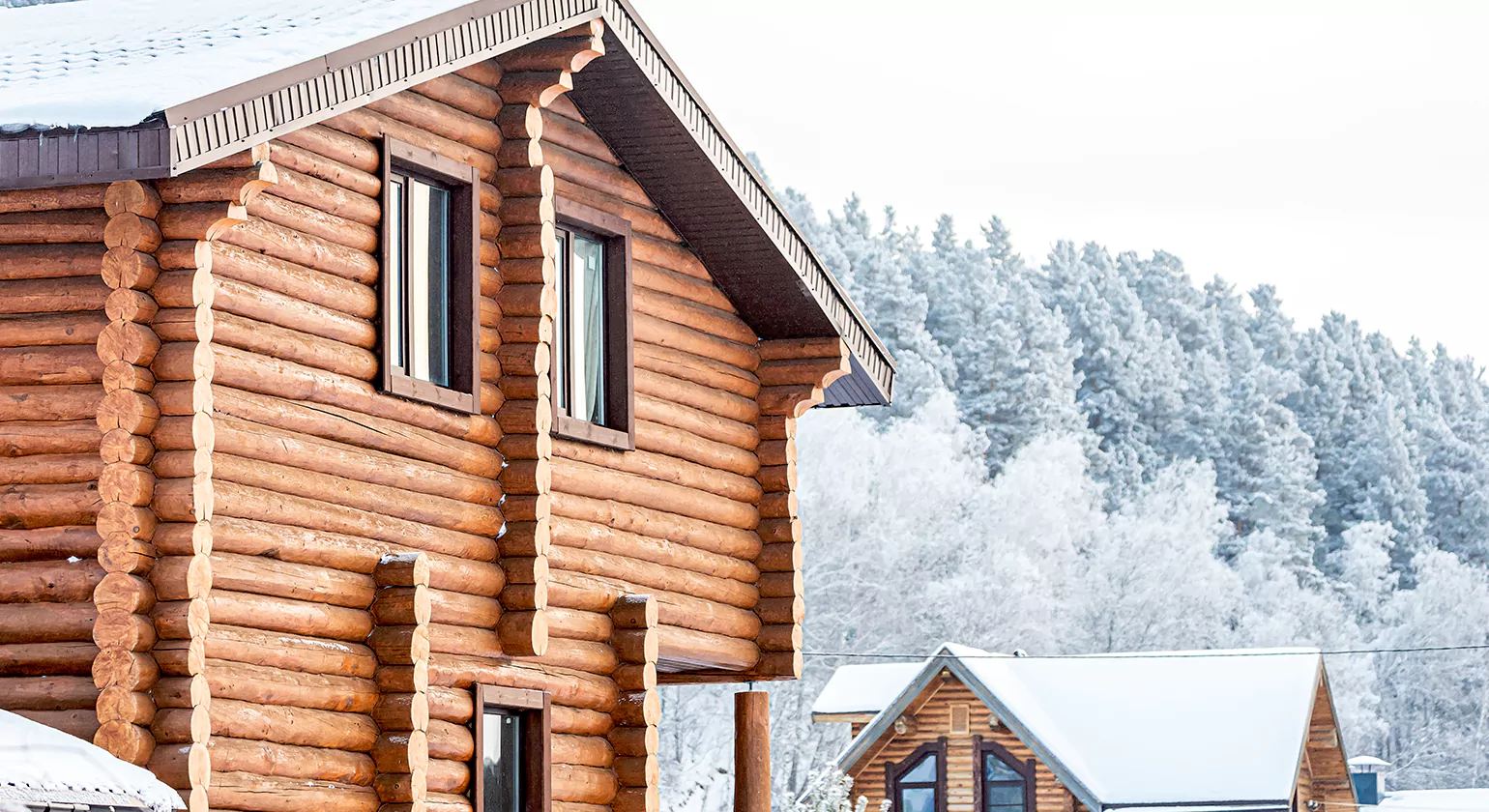
Pine vs Cedar: What’s the Difference?
Pine Log Siding: Affordable and widely available, pine siding offers a smooth surface and takes stain well. It’s a great choice for budget-conscious homeowners seeking a rustic look.
Cedar Log Siding: Naturally resistant to rot, decay, and insects, cedar is more durable than pine. It has a rich aroma, beautiful reddish tone, and requires less frequent maintenance—though it comes at a slightly higher cost.
Both types provide excellent aesthetics, so your choice will depend on climate, budget, and style preferences.
Half-Log vs Full-Log Siding
Half-Log Siding: This is the most common and practical option. It’s flat on the back and rounded on the front, giving the appearance of full logs with easier installation. Half-log siding is lighter, easier to work with, and compatible with standard house framing.
Full-Log Siding: These are thicker pieces that give a more robust, stacked-log look. Though heavier and more expensive, they offer deeper shadow lines and a more authentic cabin appearance.
Hand-Hewn, Smooth, and Milled Options
- Hand-Hewn Log Siding: Features a textured surface that looks hand-crafted with an axe, perfect for that rugged, old-world charm.
- Smooth Finish: Sleek and modern, smooth log siding offers a clean appearance ideal for blending rustic elements with contemporary design.
- Milled Profiles: Precisely cut for consistency, milled siding ensures uniform joints and faster installation—ideal for large projects or DIY work.
Design Styles and Inspiration
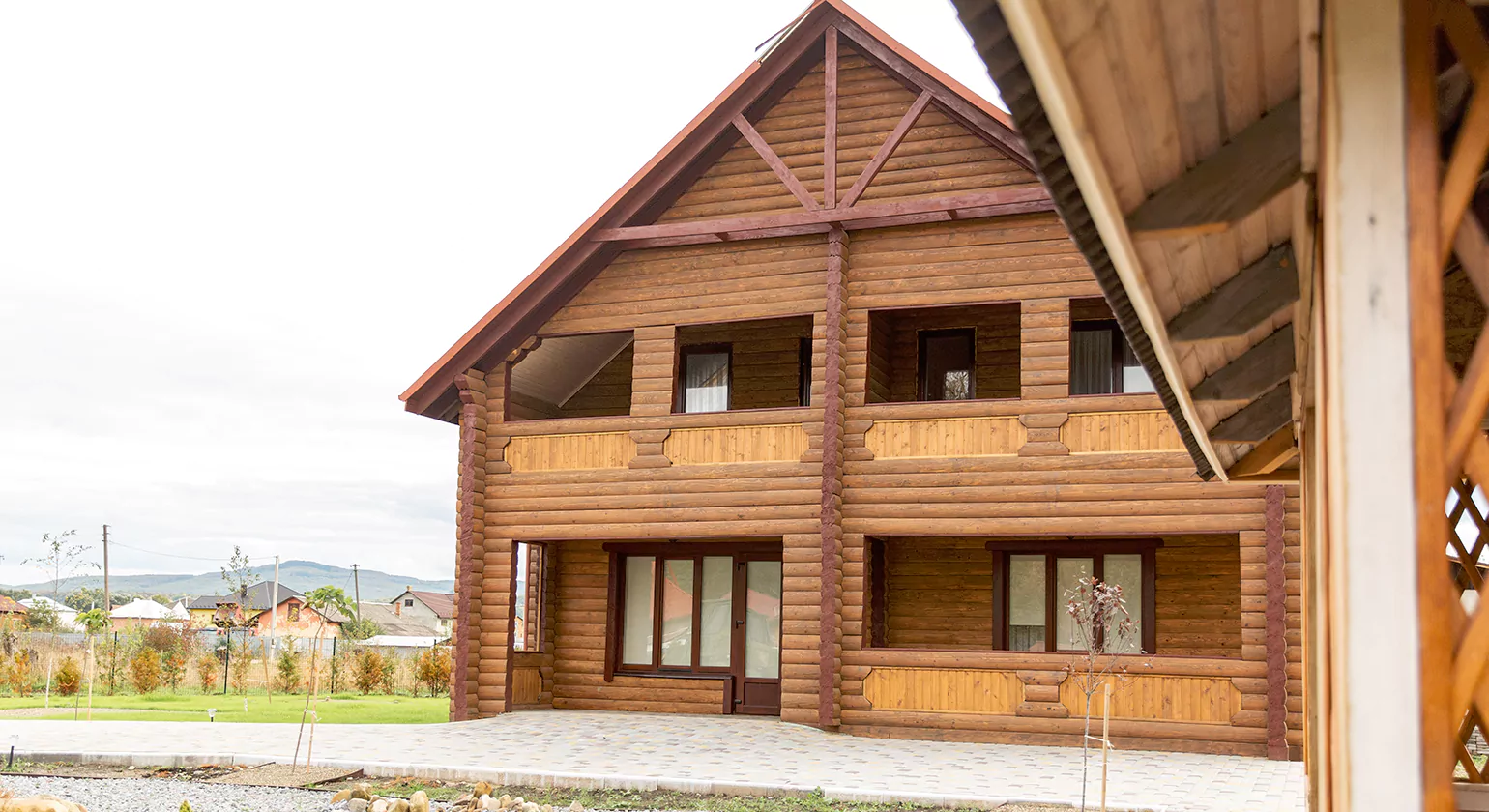
Classic Cabin Look
The classic cabin look is synonymous with warmth, simplicity, and nature. Log wood siding is a perfect choice for achieving this rustic aesthetic, providing your home with a timeless appeal. Think of tall wooden walls, large windows to let in natural light, and an overall cozy feel. Whether you’re in a mountainous region or tucked away by the lake, log wood siding transforms your home into a beautiful rustic retreat. You can further enhance the look with earthy tones such as deep browns, warm golds, or natural wood stains to complement the organic beauty of the surrounding environment.
Blending Log Siding with Modern Architecture
While log cabins are often associated with old-world charm, blending log siding with modern architecture creates a stunning fusion of rustic and contemporary styles. Think of clean lines, expansive glass windows, and minimalist designs juxtaposed with the warmth and texture of log siding. Modern architecture with log siding creates a perfect balance between comfort and sleek sophistication. Use neutral color schemes or opt for lighter shades of pine or cedar to maintain a bright and airy feel in the interior while keeping the rustic exterior.
Enhancing Curb Appeal with Stone and Metal Accents
Log siding can be paired with stone and metal accents to enhance curb appeal and provide texture contrast. A stone foundation or stone cladding at the base of the log siding can ground your structure, providing a solid and organic feel. Adding metal accents, like steel roofing or wrought iron fixtures, further emphasizes the modern-rustic style. This combination not only boosts the home’s aesthetic but also adds durability, weather resistance, and fire resistance.
Installation Guide for Log Wood Siding
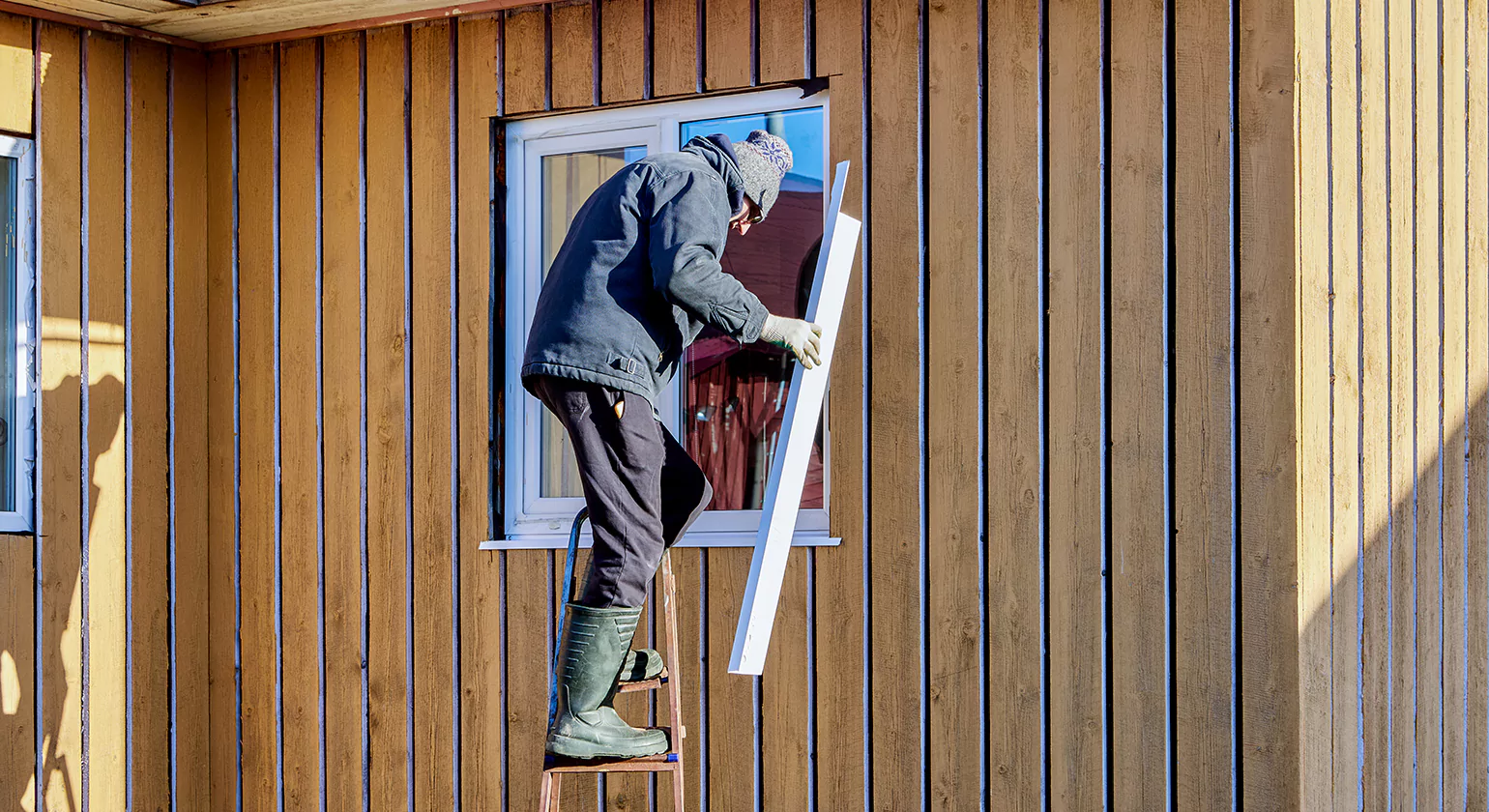
Tools and Materials Required
Installing log wood siding requires basic carpentry skills and the right tools. Here’s what you’ll need for a successful DIY project or for understanding what to expect when hiring professionals:
- Measuring Tape & Level: For accurate measurements and to ensure your siding is aligned.
- Circular Saw or Table Saw: To cut the siding pieces to the correct length.
- Nail Gun or Hammer: For securing the siding.
- Galvanized Screws: To fasten the trim and siding securely to your house frame.
- Caulk: For sealing gaps around windows, doors, and corners to prevent moisture entry.
- Staining Supplies: Brushes, sprayers, or rollers to apply stain and protective finish.
For DIYers, using end-matching systems and tongue-and-groove profiles can make installation much easier, ensuring a secure fit and reducing material waste.
Tongue and Groove vs End-Matching Systems
There are two main systems to consider when installing log siding: tongue and groove and end-matching.
- Tongue and Groove: This system features a groove on one side of each board and a tongue on the other, allowing them to fit together seamlessly. It offers a clean, tight finish and is often used in log homes for a neat and secure fit.
- End-Matching: This system involves matching the ends of the boards to minimize gaps and improve the overall strength of the structure. It’s an excellent choice if you’re aiming for a more rustic appearance with an emphasis on longevity and durability.
Both systems reduce material waste and installation time, ensuring that your log siding fits well and lasts for years.
DIY Tips or Hiring a Pro
Installing log siding can be a DIY project for those with basic carpentry skills, but hiring a professional might be a good option if you’re looking for a flawless finish. Here are some tips to help you decide:
- DIY Tips: For a successful DIY log siding project, ensure you:
- Measure twice, cut once to avoid material waste.
- Stain the boards before installation to ensure even coverage and easier maintenance.
- Take your time with corner joints and window trims for a professional look.
- Hiring a Pro: If you prefer a more hands-off approach, hiring an experienced contractor can help. A pro can ensure the proper installation of the siding, especially if you’re using specialized systems like tongue and groove or end-matching.
Maintenance and Care Tips
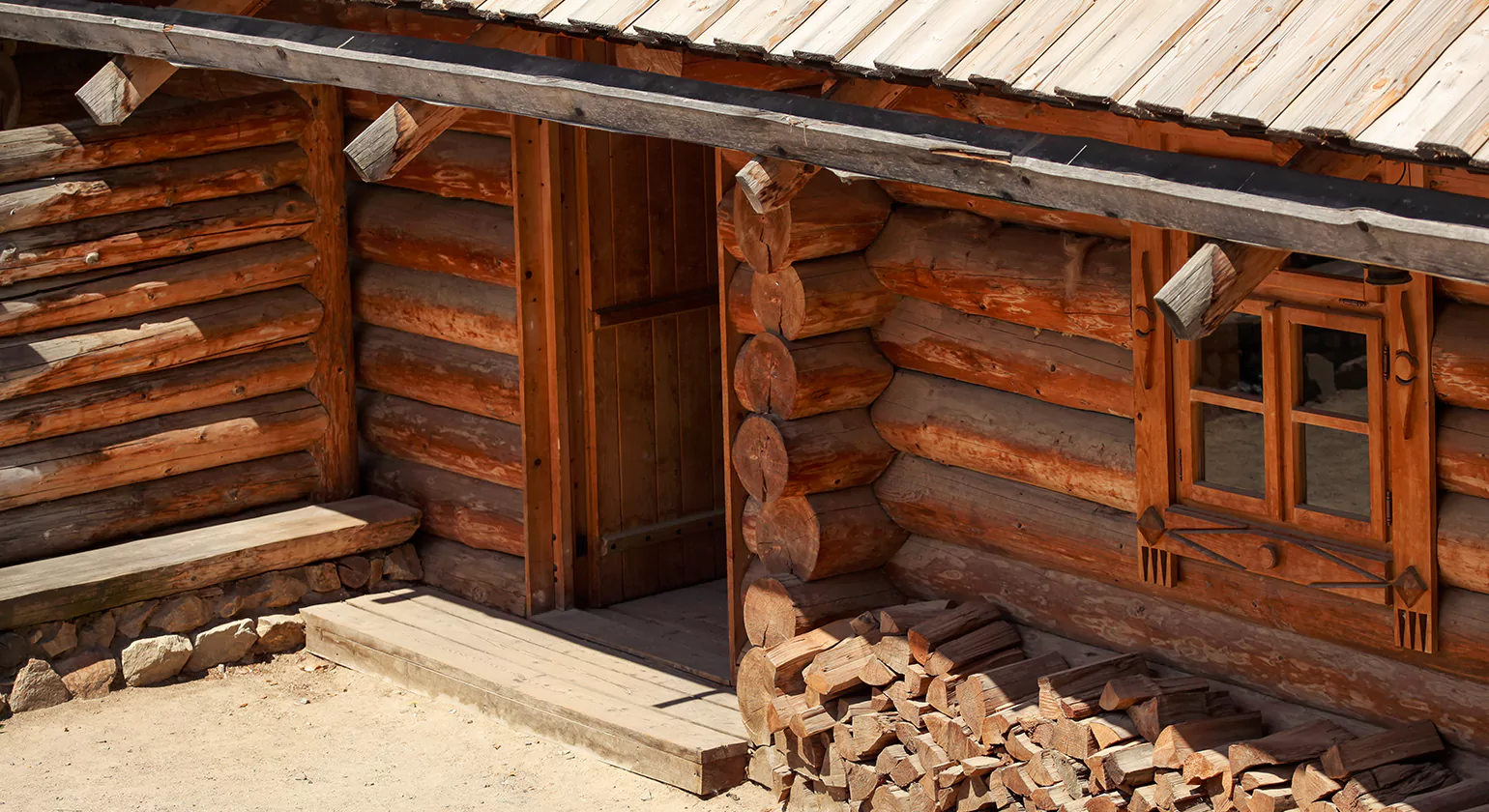
Log wood siding is a durable and low-maintenance option, but like any wood product, it requires occasional upkeep to keep it looking its best.
- Cleaning: Regular cleaning is important to prevent dirt, mold, and mildew buildup. Use a soft-bristled brush or pressure washer (on a low setting) to remove dirt and debris. Be careful not to damage the wood surface.
- Staining: Staining protects your log siding from the sun, rain, and other environmental factors. Apply a high-quality stain to enhance the wood’s natural beauty and ensure long-lasting protection. Choose a semi-transparent stain for a more natural look or a solid stain for more color opacity.
- Sealing: After staining, apply a protective sealant to lock in the color and protect the wood from moisture and UV rays. Use a clear sealant or one that is tinted to complement your wood’s finish.
Dealing with Moisture, Insects, and Sun Exposure
- Moisture: Log wood siding can be susceptible to moisture damage. Use a moisture barrier beneath the siding during installation and ensure the siding is properly sealed. Gutter systems can also help keep water away from your foundation.
- Insects: Termites and other wood-boring insects can cause damage to log siding. Treat the wood with insect-resistant products during installation and periodically check for any signs of pest activity.
- Sun Exposure: The sun can cause the wood to fade over time. Regularly reapply a UV-resistant stain or sealant to maintain the wood’s rich color and prevent sun damage.
Seasonal Maintenance Checklist
- Spring: Inspect your siding for any signs of damage caused by winter weather, like cracked or loose boards. Clean and re-stain if necessary.
- Summer: Check for signs of insects or moisture buildup. Clean the siding and ensure all seams are sealed.
- Fall: Ensure the gutters are clear and working properly to prevent water accumulation. Inspect for any peeling stain or sealant and touch up as needed.
- Winter: Remove snow and ice from the siding carefully to avoid moisture buildup. Consider adding extra protection around windows and doors.
Log Wood Siding vs Other Siding Options
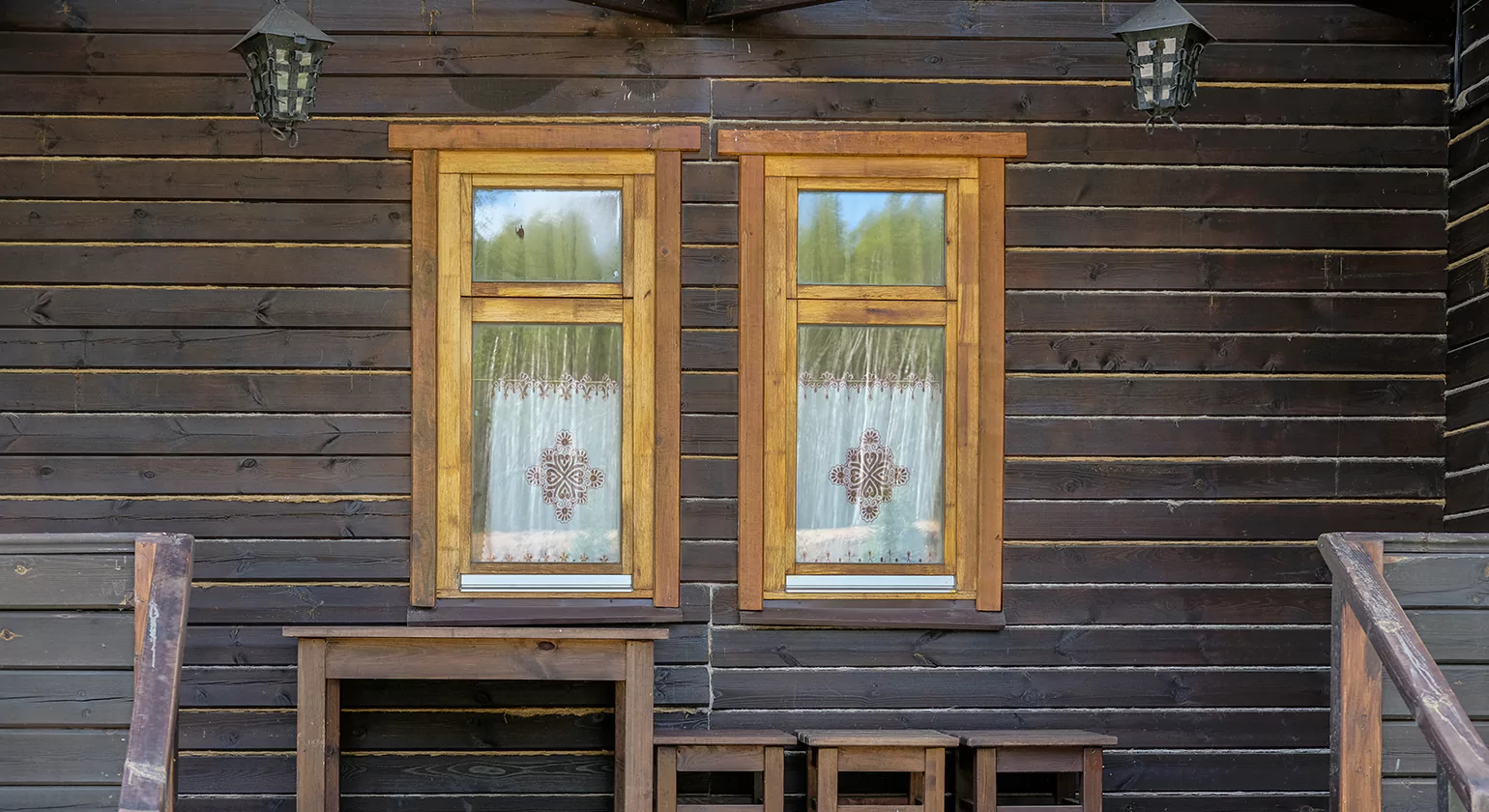
Choosing the right exterior siding for your home is a big decision that impacts style, durability, and cost. If you’re considering a natural, rustic aesthetic, log wood siding stands out—but how does it compare to other popular choices like shiplap, board and batten, and cedar shake? Here’s a breakdown to help you make an informed decision.
Log Siding vs Shiplap, Board & Batten, and Cedar Shake
- Log Wood Siding mimics the look of a full log home while being easier and more affordable to install. Made from kiln-dried pine or cedar, it offers authentic wood grain texture and long-lasting performance. Perfect for cabins, lodges, or rustic-style homes.
- Shiplap Siding has surged in popularity due to its clean horizontal lines and farmhouse appeal. While it’s a trendy option for both interiors and exteriors, it lacks the bold, rugged charm of log siding and may require more maintenance outdoors.
- Board and Batten creates a vertical pattern using alternating wide boards and narrow battens. It’s ideal for modern farmhouses and barn-style homes, offering a classic, high-contrast look. However, it doesn’t deliver the same three-dimensional depth as log siding.
- Cedar Shake Siding is known for its hand-split texture and natural resistance to decay and insects. While it adds rich character to a home, it tends to be more expensive and often requires more upkeep than log wood siding.
Pros and Cons for Each Siding Style
Log Siding
Log wood siding is the go-to choice for homeowners seeking a true rustic, cabin-style aesthetic. It offers strong insulation, making homes more energy-efficient in both hot and cold climates. The installation is generally straightforward, especially with tongue and groove or end-matching systems. However, log siding can come with a higher upfront cost compared to other wood siding options. It also requires periodic sealing or staining to maintain its natural beauty and prevent weather-related wear.
Shiplap Siding
Shiplap is known for its clean, horizontal lines and is often used in modern, coastal, or farmhouse designs. It’s versatile and brings a fresh, contemporary look to both interior and exterior walls. The downside is that shiplap isn’t as durable for exterior use unless specially treated, and it doesn’t deliver the rustic charm associated with log homes. It’s better suited for design-focused homeowners rather than those aiming for a natural cabin look.
Board and Batten Siding
Board and batten siding is a cost-effective option that creates a striking vertical pattern on your home’s exterior. It’s easy to paint or stain and adds height and visual interest to walls. While it’s great for adding modern farmhouse or barn-style appeal, it lacks the textured, organic feel that log siding provides. It doesn’t fully capture the rustic ambiance many homeowners seek when choosing wood siding.
Cedar Shake Siding
Cedar shake siding stands out for its timeless, handcrafted look and natural resistance to insects and moisture. It provides excellent curb appeal and is perfect for creating a cozy, weathered exterior. However, cedar shakes require more maintenance than other styles, including regular sealing or staining. They are also typically more expensive due to the cost of materials and installation labor.
Choosing the Right Option for Your Home
If your goal is a timeless, rustic, and cozy exterior, log wood siding is the best choice. It provides the look of a log home without the expense or complexity of full log construction. For modern, coastal, or farmhouse styles, shiplap or board and batten may be better suited. Always consider your design goals, climate, and maintenance preferences when choosing siding.
Cost Guide for Log Wood Siding
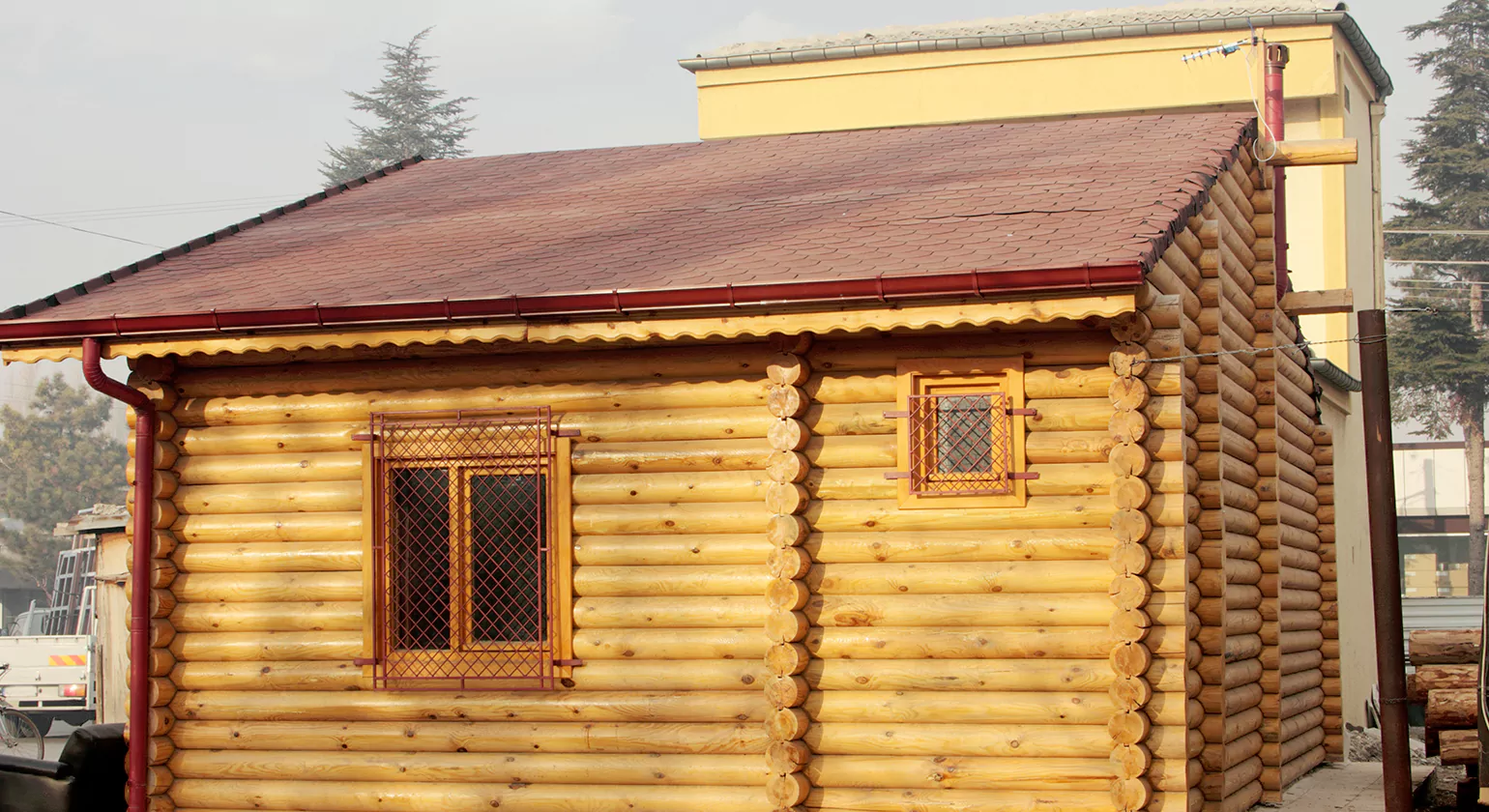
When planning to upgrade your home’s exterior with a rustic look, understanding the cost of log wood siding is essential. Whether you’re building a log-style home from scratch or simply updating an existing property, knowing the expenses involved can help you plan and budget effectively. Let’s break down the average costs, labor fees, and DIY vs professional installation considerations.
Average Price Per Square Foot
The cost of log wood siding varies based on the type of wood (pine, cedar, spruce), quality, and thickness. On average, you can expect to pay between $4 to $10 per square foot for materials alone. Pine is generally more affordable, starting around $4 to $6 per square foot, while cedar, prized for its durability and resistance to rot and insects, may range from $6 to $10 or more per square foot.
Additional material expenses may include trim pieces, corner logs, stains, and sealants—all essential for both aesthetics and protection. If you’re opting for kiln-dried or pre-finished siding, the upfront cost may be slightly higher but will save time and maintenance down the road.
Labor and Installation Costs
Labor costs for log wood siding installation typically range from $3 to $7 per square foot, depending on the complexity of the home design, siding type (e.g., tongue and groove vs end-matched), and your local market. Homes with multiple gables, dormers, or intricate designs may require more skilled labor, adding to the total expense.
You’ll also need to factor in prep work, especially if replacing old siding or modifying framing. The overall installed cost can fall between $8 and $17 per square foot, combining materials and labor.
Budgeting for DIY vs Professional Install
Going the DIY route can significantly reduce labor costs, making it a more budget-friendly option for those with carpentry experience. With proper planning and tools, homeowners can install log siding themselves, saving thousands of dollars. However, the trade-off is time, skill, and the potential for costly mistakes.
Hiring a professional installer ensures proper installation, structural integrity, and a polished finish. While it’s more expensive upfront, it provides peace of mind, especially for large-scale projects or homes in challenging climates.
Where to Buy Log Wood Siding
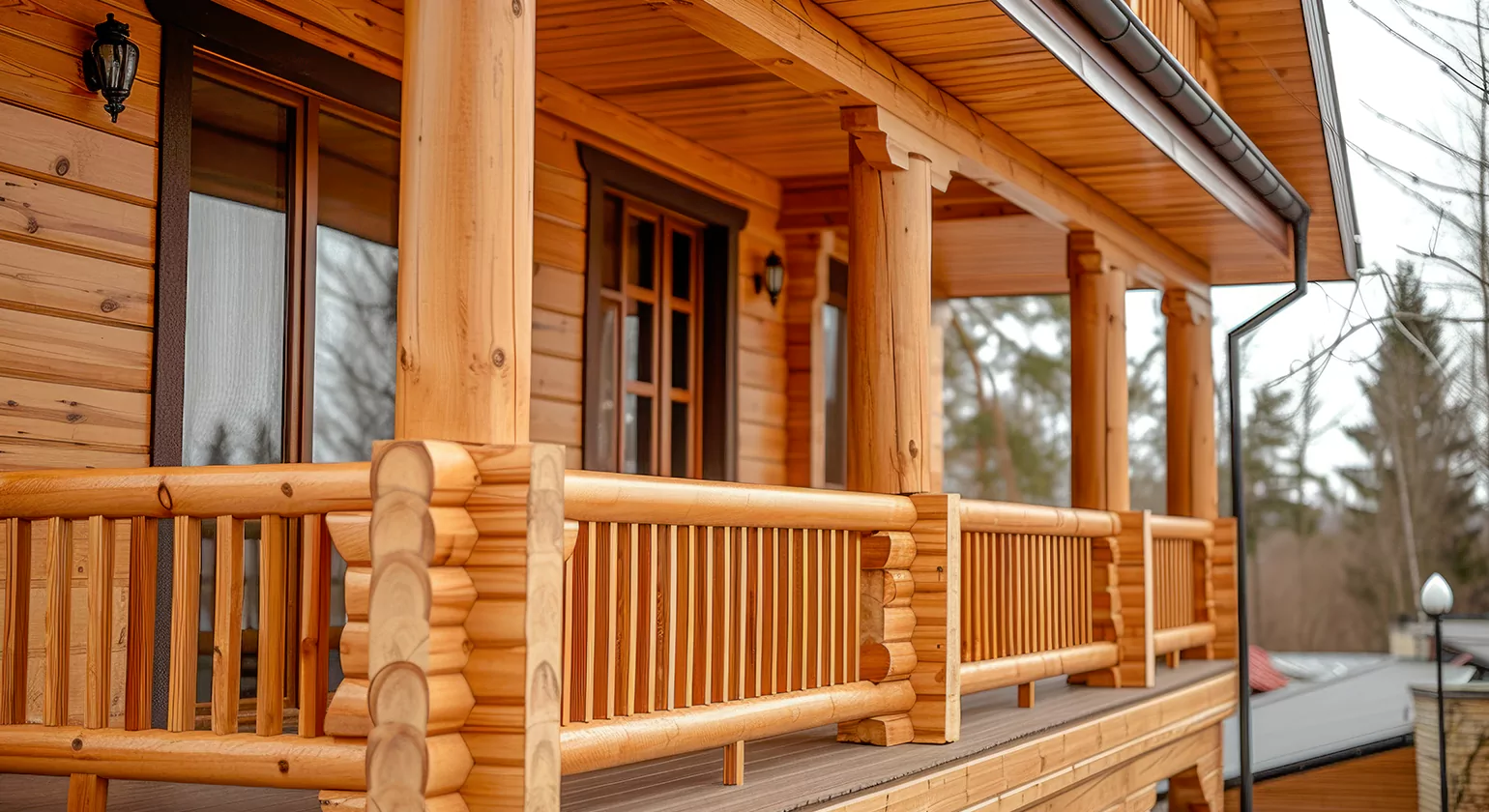
Choosing the right place to purchase log wood siding is just as important as selecting the style and finish. With rising interest in rustic and cabin-inspired architecture, more suppliers now offer high-quality siding options. But where should you start your search?
Best Online Retailers and Local Suppliers
The internet has made it easier than ever to find log siding suppliers across the country. Leading online retailers such as:
- WoodWorkers Shoppe
- Twin Creeks Log Home Supply
- Log Siding Guys
- Homestead Timbers
offer extensive selections of pine and cedar siding in different profiles like tongue and groove, D-log, and hand-hewn styles. Many of these companies also provide stain, chinking, trim pieces, and installation hardware—making them one-stop shops for log siding projects.
Local suppliers and lumberyards are another great option, especially for those who prefer to see and feel the wood before buying. Regional mills often provide unique finishes, rustic cuts, or regionally sourced timber that may not be available online. Plus, you can save on shipping costs and potentially support local businesses.
If you’re buying large quantities or custom cuts, local sources may also offer wholesale pricing or bulk discounts.
Custom Orders and Delivery Options
When buying log wood siding, many homeowners look for customization options such as:
- Length and thickness customization
- Pre-stained or pre-sealed siding
- Hand-hewn or smooth finishes
- Pre-cut corner systems
- Custom log trim and accents
Most reputable suppliers offer custom milling services and will work with you to match specific dimensions or architectural requirements. This is particularly helpful if your home has unusual wall sizes, window placements, or unique trim needs.
Delivery options vary by retailer. Some companies deliver directly to your site, while others use freight shipping services. Make sure to ask about:
- Delivery lead times
- Shipping fees
- Palletized and weather-protected packaging
- Lift-gate service for residential addresses
Reliable delivery is key—damaged or late siding can delay your project significantly. Choose a supplier known for safe, timely delivery.
What to Look for in a Quality Supplier
Not all siding suppliers are created equal. To ensure a smooth experience and lasting results, look for suppliers who offer:
- High-quality kiln-dried wood: Reduces warping, cracking, and shrinkage.
- Clear product descriptions: Including grade, species, milling details, and finish.
- Responsive customer service: Can they answer your questions, provide quotes, and guide your purchase?
- Online reviews and testimonials: What have other homeowners said about their experience?
- Warranty options: Do they stand behind their product?
- Installation support: Some offer video tutorials, guides, or even connect you with installers.
Spending a little more on a trusted supplier will often save money (and stress) in the long run.
Is Log Wood Siding Right for You?
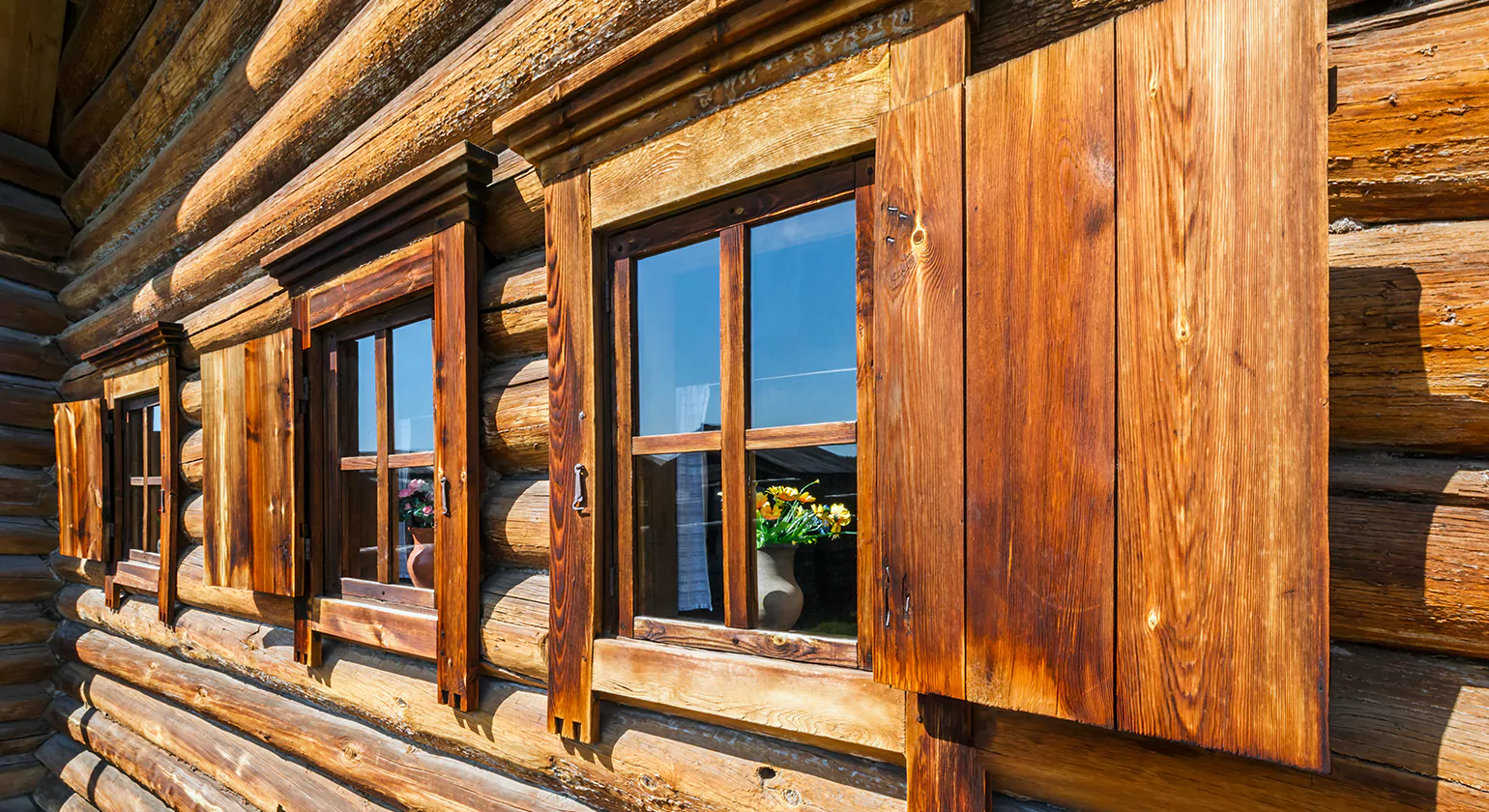
Before you finalize your purchase, it’s important to determine if log wood siding is the right fit for your home and lifestyle.
Ideal Home Locations and Architectural Styles
Log siding is a natural choice for:
- Cabins and vacation homes in the mountains, forests, or by the lake
- Country homes or ranch-style properties
- Suburban homes looking to add rustic charm
- Tiny houses or ADUs with character
It pairs well with architectural features like timber beams, gabled roofs, wraparound porches, and stone fireplaces. Whether you want a classic frontier look or a modern-rustic blend, log siding adapts beautifully.
Environmental and Climate Considerations
Log siding performs best in moderate to cool climates with low to moderate humidity. However, proper staining and sealing can protect it from the elements in nearly any region.
If you live in a wet or humid climate, choose cedar siding for its natural resistance to moisture and insects. Regular maintenance—like cleaning, sealing, and inspecting for damage—will extend your siding’s life.
Log siding is also a sustainable option, especially if sourced from responsible mills. Look for FSC-certified wood or ask suppliers about their sourcing practices to make an eco-conscious choice.
Conclusion
Log wood siding offers a beautiful, long-lasting solution for homeowners who love rustic charm and natural design. Whether you’re renovating a lakefront cabin or building a mountain retreat, choosing the right supplier, materials, and style is key to a successful project.
With the right combination of trusted retailers, custom features, and climate-aware preparation, log siding can transform your home’s exterior into something truly timeless. It’s more than just siding—it’s a statement of lifestyle and connection to nature.
Ready to start your log siding project? Research your options, request samples, and talk to trusted suppliers today to bring your dream home to life.
Know More>>> Log Cabin Siding Ideas for a Cozy Timeless Look
FAQ’S
1. What is log wood siding made from?
Log wood siding is typically made from pine or cedar, which are known for their durability, natural beauty, and resistance to insects and decay. These woods are kiln-dried and milled into various profiles to mimic the look of full log construction without the high cost or complexity.
2. Is log siding better than traditional log homes?
Log siding offers many of the same aesthetic benefits as full log construction but with fewer drawbacks. It’s easier to install, more affordable, requires less maintenance, and can be attached to standard framing. This makes it an excellent choice for homeowners seeking a rustic look without structural challenges.
3. How much does log wood siding cost?
On average, log wood siding costs between $4 and $8 per square foot for materials, depending on the wood species and finish. Installation can add $3 to $6 per square foot, but DIY installation can reduce costs. Always budget extra for trim, stain, sealant, and fasteners.
4. Can I install log wood siding myself?
Yes, log siding is DIY-friendly, especially if it comes in tongue and groove or end-matched profiles. Basic woodworking skills, the right tools, and careful planning are key. However, for large or multi-story homes, hiring a professional may be more efficient and ensure proper weatherproofing.
5. How do you maintain log siding?
To keep your log siding looking great, clean it annually, re-stain and seal every 3–5 years, and inspect for moisture, sun damage, or pests. Proper maintenance can extend the life of your siding for decades.
6. Is log wood siding energy efficient?
Yes, when installed properly, log wood siding provides good insulation. The solid wood retains heat and keeps interiors cooler in the summer. For the best results, pair it with modern insulation behind the walls.
7. Can log siding be used indoors?
Absolutely. Log siding is a great way to add rustic charm to interior spaces like living rooms, bedrooms, and accent walls. It’s often used with log trim and beams for a cohesive log cabin feel throughout the home.
8. Where can I buy quality log siding?
Top online retailers include WoodWorkers Shoppe, Twin Creeks Log Home Supply, and Homestead Timbers. Many local mills and lumberyards also carry log siding or offer custom orders. Look for kiln-dried wood, detailed product specs, and reliable delivery options.
9. What’s the difference between log siding and shiplap?
While both are wood sidings, log siding offers a rounded, rustic log look, whereas shiplap has a flat, modern appearance with clean lines. Shiplap is more common for interior use and modern farmhouse styles, while log siding is ideal for cabins and rustic homes.
10. Is log wood siding a good investment?
Yes, log siding adds curb appeal, character, and value to your home. It’s especially desirable in mountains, lakes, or rural communities where rustic architecture is appreciated. With proper care, it remains beautiful and functional for decades.

